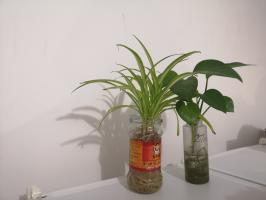Introduction: Why is Water Purification Important?
Water is an essential element for human survival, which is why it is essential that the water we drink is pure and clean. Unfortunately, our natural water sources, such as rivers, lakes, and groundwater, are often contaminated with various pollutants, including harmful bacteria, chemicals, and heavy metals.
The Role of Natural Plants in Water Purification
Did you know that natural plants play a crucial role in purifying water? A wetland ecosystem, for instance, filters water naturally through the roots, stems, and leaves of different plant species. In fact, wetlands are one of the most productive ecosystems in terms of water purification.
How Natural Plants Purify Water
There are several ways in which natural plants help to purify water. For one, they absorb nutrients and pollutants through their roots, thereby preventing them from entering the water source. They also bind sediment, filtering out sediment from the water, and they release oxygen into the water, supporting the growth of beneficial bacteria that convert harmful pollutants into less harmful or benign substances.
The Role of Microbes
Natural plants work in symbiosis with microbes, which are tiny organisms that help to keep water clean. Certain microbes decompose organic matter, breaking down harmful pollutants into less harmful compounds. Others remove excess nitrogen and phosphorus that can contribute to harmful algal blooms in water bodies.
Examples of Natural Plants Used for Water Purification
There are various natural plants that are commonly used to purify water. Water hyacinth, for example, is a floating plant that absorbs pollutants through its roots and helps to reduce excess nutrients in water bodies. Another example is cattail, which grows in marshy areas and traps sediment and pollutants in its root systems.
Conclusion
In conclusion, natural plants play a crucial role in purifying water through a process that involves nutrient and pollutant absorption, sediment filtration, oxygen release, and microbial support. By working in perfect harmony, these natural systems have the potential to provide us with clean, pure water that supports our health, well-being, and survival. It is therefore imperative that we protect and preserve these essential ecosystems for future generations to come.

 how many times do yo...
how many times do yo... how many planted tre...
how many planted tre... how many pine trees ...
how many pine trees ... how many pecan trees...
how many pecan trees... how many plants comp...
how many plants comp... how many plants can ...
how many plants can ... how many plants and ...
how many plants and ... how many pepper plan...
how many pepper plan...






























